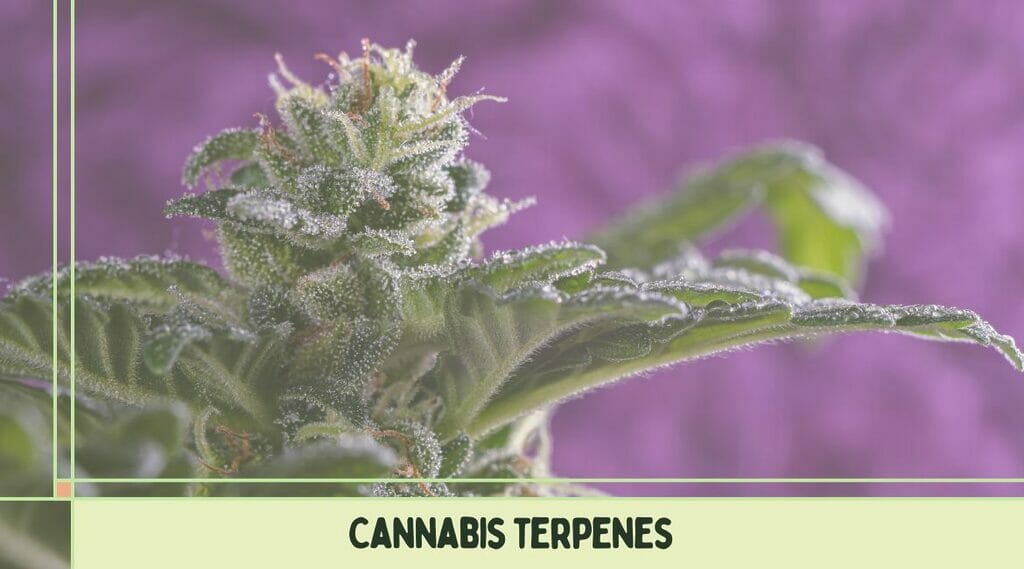You may have heard of cannabis terpenes, but what are they exactly? Terpenes are the essential oils that give plants their unique smell and flavor. Terpenes are typically found in cannabis flowers at levels of 2–5%. In the cannabis plant, there are more than 200 different types of terpenes that have been identified. These terpenes work together to create the various flavors and aromas of cannabis strains. Not only do they impact the taste and smell of a strain, but they also affect its effects. Different combinations of terpenes can produce different results, such as relaxation or energy.
Table of Contents
Terpenes Found in Cannabis Plant
There are more than 200 different types of terpenes that have been identified in the cannabis plant. Each type of cannabis strain has a unique combination of these terpenes, which is what gives each strain its own signature scent and flavor profile. For example, a strain with earthy and pungent aromas may taste like pine while a fruity strain may taste sweet like berries. In addition to impacting taste and smell, these terpenes also affect a cannabis strain’s effects.
Cannabis terpenes can be classified into three groups:
- Monoterpene terpenoids have a strong citrus odor like Limonene or Linalool
- Sesquiterpene terpene had a woody smell like Camphene or Pinene.
- Diterpene terpenes produce an earthy aroma like Myrcenes and Humulenes.
The Benefits of Cannabis Terpenes
While THC and CBD get most of the credit when it comes to the therapeutic benefits of cannabis, research is beginning to show that terpenes may play an equally important role. Different combinations of terpenes can produce different results, such as relaxation orenergy. Some research has even shown that certain combinations of terpenes can be used to treat specific conditions like anxiety or pain.
Cannabis Terpene Flavors
When it comes to flavors, there is a wide variety to choose from thanks to the various combinations of terpenes found in different strains. Some common flavors include citrus, floral, earthy, musky, minty, sweet, tropical fruit, and berry. The possibilities are nearly endless!
How You Can Use Cannabis Terpenes in Cooking & Edibles
Terpenes are the essential oils that give cannabis its distinctive smell. These potent compounds can also be used to enhance the flavor of food, and they offer a variety of health benefits. When cooking with cannabis terpenes, it is important to remember that they are highly concentrated. A little goes a long way, so start with a small amount and increase as needed. Terpenes can be added to any dish, but they pair especially well with fatty foods like meat, nuts, and cheese. In addition to flavoring food, terpenes can also be used to make edibles. Cannabis-infused oils and butter are a great way to add terpenes to your favorite recipes. Just be sure to use a low heat when cooking with cannabis-infused products, as high temperatures can damage the delicate compounds. By incorporating cannabis terpenes into your cooking, you can enjoy not only the flavor enhancement but also the potential health benefits.
Conclusion – Cannabis Terpenes
Cannabis terpenes are responsible for the plant’s unique flavor and aroma profiles. In addition to impacting taste and smell, these terpenes also affect a cannabis strain’s effects. Different combinations of terpenes can produce different results, such as relaxation or energy. Some research has even shown that certain combinations of terpenes can be used to treat specific conditions like anxiety or pain. With so many possible benefits, it’s no wonder why these aromatic compounds are getting so much attention lately!
FAQ – Cannabis Terpenes
What is entourage effect?
The term entourage effect was first coined by Israeli researcher Raphael Mechoulam in 1998, and it refers to the synergy between different cannabis compounds. cannabinoids like THC and CBD work together with terpenes like myrcene and limonene to produce specific effects. This phenomenon is what gives each strain its unique aroma, flavor, and effect. For example, the combination of myrcene and limonene may produce a sedative effect, while the combination of pinene and caryophyllene may produce a more uplifting effect. The entourage effect is one of the most important aspects of cannabis research, and it holds the key to unlocking the plant’s full therapeutic potential. By understanding how different cannabinoids and terpenes interact, we can develop strains that are specifically tailored to treat different conditions. Ultimately, the entourage effect is what makes cannabis such a powerful medicine.




